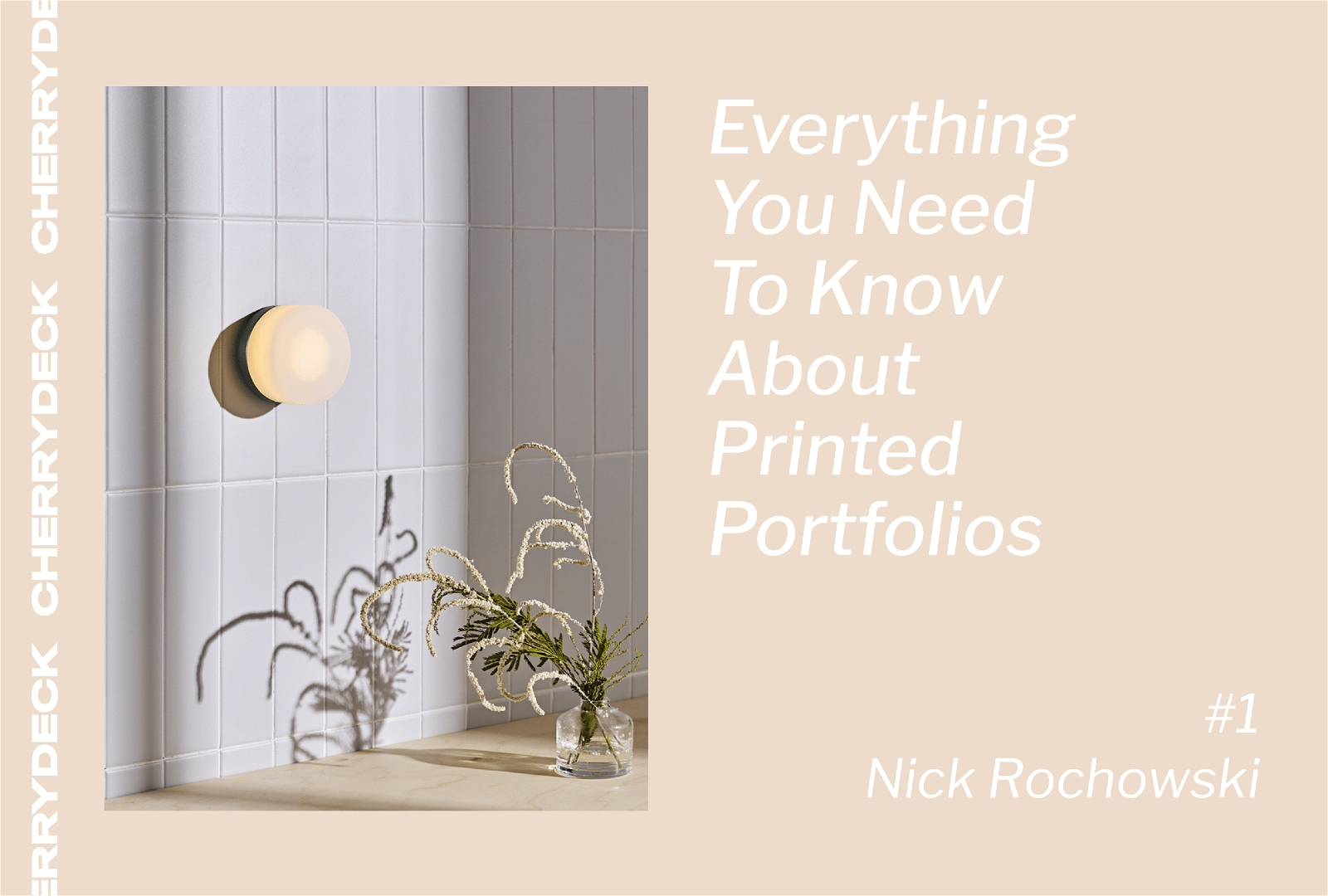In today’s age of Instagram, paper portfolio still matters— even more than you may think. Photographer Nick Rochowski will tell you why and exactly how you can create a great paper portfolio.
In this series “How to Create a Great Paper Portfolio”, we ask photographers about their view on printed portfolios as well as tips and insights about how to produce a high-quality book. The first expert we reached out to is Nick Rochowski. He visited us for the Hamburg Art Buyers Tour, and we were very impressed by his stunning portfolio. Nick is a graduate of The London College of Printing, and regularly gives lectures and takes part in seminars at universities and creative forums. He also shoots worldwide for creative agencies, design studios, architects, cultural institutions, and publishers.
The best work is all that’s needed, not fully stories.

So let’s go straight to the point! With Instagram, individual websites, and platforms like Cherrydeck, is a printed photography portfolio still needed?
Absolutely! The most important thing for me, about making new client relationships and maintaining them, is to meet face to face. So much gets lost on the screen and when you meet and talk there is nothing better to use as a discussion point than to show new printed work. It can be a portfolio, a catalog or zine, an editorial feature or maybe even a specially printed image. Clients and collaborators will always respond positively to something in print, or at least, it guides the direction of the meeting/coffee chat!
What format have you found to work the best?
Website and portfolios.
Why did you decide to print your portfolio?
If I have a face to face meeting that is a pitch or presentation, I will always print a curated portfolio for it.
Work by Nick Rochowski Work by Nick Rochowski
What specificities did you choose? What should you pay attention to?
Focus on layout, sequence, pacing and pairings. Matt or lustre paper.
What is the average price you should be ready to pay?
It needs to look good, don’t hold back on quality as it can make all the difference. A newly printed portfolio can cost £100 to £200 for the prints only. Once the main print is done though, additional top-ups and adjustments for different clients cost much less.
What would you say is the optimal number of pictures to include? How did you make your selection?
I would say 20 pages, or less depending on the meeting. It needs to stay fresh and engaging and maintain an interesting point of conversation. The best work is all that’s needed, not fully stories. What you don’t want is for the conversation to run dry and still have half the portfolio to go.
How do you treat consistency in style? Is it better to approach a portfolio in a sense it showcases variety and versatility or a consistent personal style?
My aim with a portfolio is to show work relevant to the meeting/pitch, so a strong voice is good but that doesn’t mean the projects can’t vary.
Work by Nick Rochowski Work by Nick Rochowski
If you photographed a series of different topics, should you have a portfolio for each?
This ties into the previous question and I think in a portfolio you should show only the best few images from different projects. You can always bring out an iPad to show an expanded project.
As a final takeaway: what would be your #1 do and #1 don’t?
Do take time to edit properly or get an editor to take a look… Someone you value the opinion of and who understands your clientele. Don’t go in empty handed!
To see more of Nick’s work visit his Cherrydeck profile or his website, here. For more insights on printed portfolios, keep an eye on our blog. ?





One thought on “How to Create a Great Paper Portfolio — With Nick Rochowski”